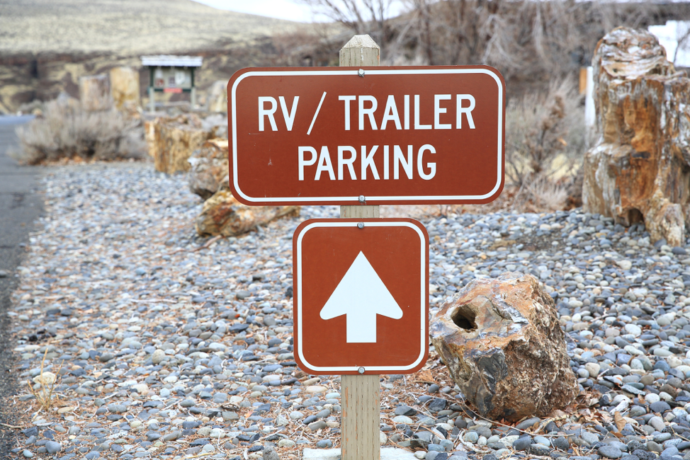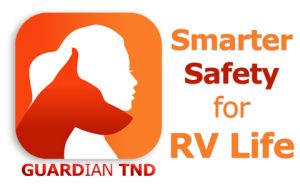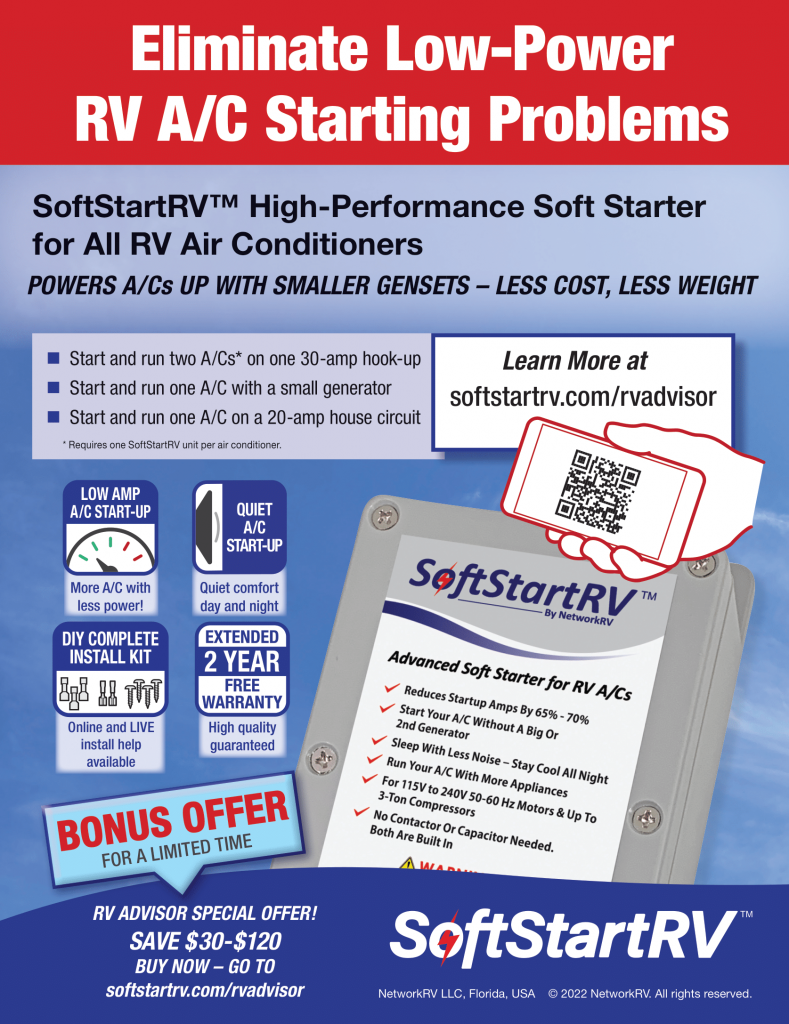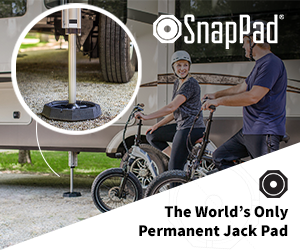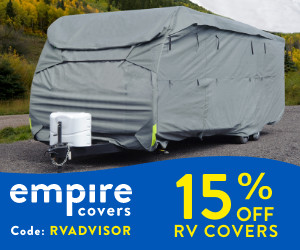Learn the tools of the trade to park your RV like a pro
Life on the road can be rocky enough, and then you park on a slope. Resting on an incline can make for messy eating, disturbed sleeping, and some serious uncertainty while walking around, unless you know how to stabilize your RV.
An RV is a vehicle, and good suspension is necessary for a smooth ride while driving. As campers increase in length and suspensions improve, small movements inside the parked camper become more obvious.
The job of a suspension is to allow a slight up and down movement at the wheels – that same movement that creates a gentle ride on the road is the cause of irritating wiggling and jiggling while parked.
So, essentially, the lightness that facilitates easy and economical travel also lends itself to a feeling of instability once parked. Although your RV will never be as solid as a home on a permanent foundation, there are steps to improve its stability.
Chock full of goodness
The first and most obvious step is to park in the most level area possible, but that’s not always up to you depending on your location.
A campsite with a concrete pad is ideal, but not always available. Starting with a level surface can save you from having to do a lot of wheel blocking.
Before unhitching a fifth-wheel or travel trailer, chock the wheels to prevent rolling; the last thing you want is to watch your recreational vehicle roll away without you. Stop chocks are often more effective than standard triangle chocks. Use them on both sides of the trailer for maximum security, placing them between the tandem tires and locking them against each other.
Jack of all trades
Most travel trailers and fifth-wheels come equipped with stabilizer jacks to help combat instability.
Depending on your set-up and personal preference, it may take more than that to get the perfect parking job. Stabilizer jacks work just as described – they’re for stabilizing, not leveling.
Carefully read your owner’s manual to learn more about how yours work.The built-in jacks attached to the frame are designed to extend while setting up camp and increase the stability of the trailer by reducing the up and down motion of the suspension as people move around inside.
With a fifth-wheel, although the landing gear acts as a built-in stabilizer, additional stabilizers are usually needed in the back.
Some travel trailers require at least four stabilizer jacks – sometimes more. Older trailers may not have built-in jacks, and in that case, manual jacks are placed at all four corners of the rig and tightened until desired stability is achieved.
Slipping a piece of wood between the bottom of the stabilizer jack and the ground can help when you’re parking on land that lacks firmness; however, be careful about using too much blocking to save yourself the extra work of having to extend the jack so far.
The rated strength of scissor-style stabilizer jacks is based on the jack being extended to a certain point. For instance, if the weight capacity is 5,000 pounds between 13 inches and 24 inches, the weight capacity reduces drastically if the height drops below the stated 13 inches.
If you’re still unhappy with your results, consider a king pin stabilizer tripod if your RV is a fifth-wheel; the extra support underneath the kingpin can prevent unwanted motion.
Trailer wheel motion eliminators are another good option. They resemble stabilizer jacks with a slight curve to each end and immobilize the wheels. There can still be some slight motion even when the wheels are chocked, and motion eliminators prevent that.
Level out
Always travel with a level you can place at the doorway of your RV to help get some unbiased confirmation that your efforts have helped you move in the right direction.
Unfortunately, perfecting your parking job is a skill that’s best learned through trial and error. Constantly changing conditions require you to be prepared for multiple surface types and inclines.
Educate yourself with online articles, videos, and your owner’s manual. Make sure you carry the right tools and adjust as necessary, and you’ll soon be on solid ground anywhere you go.
At RV Advisor, we offer unbiased information for current and potential RV owners. We want you to have the best RVing experiences possible. Join our community to gain access to our exclusive offers, invaluable insights, and tips, or email us at info@thervadvisor1.wpengine.com with any questions you have. We’d love to hear from you!

